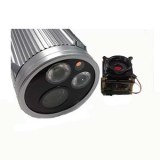The detection kit, which is based on the BES 4000 platform, is used to perform low-depth whole-genome sequencing of DNA. The sequencing results are compared to the base sequence of the human reference genome, and CNVs in the tested samples are discovered using bioinformatics analysis. It is often used to find out why a woman keeps having miscarriages, find out what is wrong with an abnormal fetus, and help with a prenatal diagnosis.
What Are The Methods To Detect CNV?
There are four main methods for detecting CNVs using Next-Generation Sequencing (NGS) data: read-pair, split-read, read-depth, and assembly.
Read-Pair Method: This approach involves analyzing the distance between pairs of sequence reads. Deviations from the expected distance can indicate the presence of a CNV.
Split-Read Method: This method identifies CNVs by looking for reads that span a breakpoint. The portion of the read that aligns to the reference sequence can provide information about the CNV.
Read-Depth Method: This is the most commonly used method in NGS-based CNV detection. It works by comparing the depth of coverage in different regions of the genome. Regions with unusually high or low coverage can suggest a CNV.
Assembly Method: This approach involves assembling the reads into a new genome sequence and then comparing this sequence to the reference genome to identify CNVs.
Each of these methods has its strengths and limitations, and the choice of method often depends on the specific requirements of the study. CapitalBio Technology continues to innovate in this area, developing advanced tools and technologies to facilitate accurate and efficient CNV detection.
What Is The Principle Of CNV-Semiconductor Sequencing?
CapitalBio Technology employs CNV-semiconductor sequencing, a specialized technique used to detect Copy Number Variations (CNVs) in the genome. CNVs are alterations of the DNA of a genome that results in the cell having an abnormal number of copies of one or more sections of the DNA.
The principle behind CNV-semiconductor sequencing involves the detection of these variations through the use of semiconductor technology. As the DNA is sequenced, the semiconductor chip detects the release of hydrogen ions, which corresponds to the incorporation of nucleotides into the DNA strand.
By comparing the sequencing data to a reference genome, CNV-semiconductor sequencing can identify regions where there are more or fewer copies of a particular DNA segment. This technique allows CapitalBio Technology to provide accurate and comprehensive genetic analysis, crucial for understanding genetic diseases and developing personalized treatments.
For more information about microarray chip, please feel free to contact us!
Ubicación : Building C, Block 88 Kechuang 6th Street, Yizhuang Biomedical Park, Beijing, 100176 Beijing,
Persona a contactar : com capitalbio, 86 10 69002900








